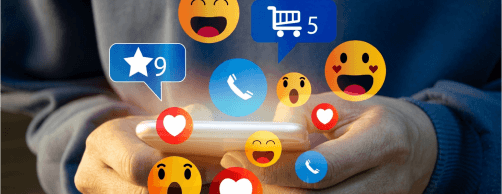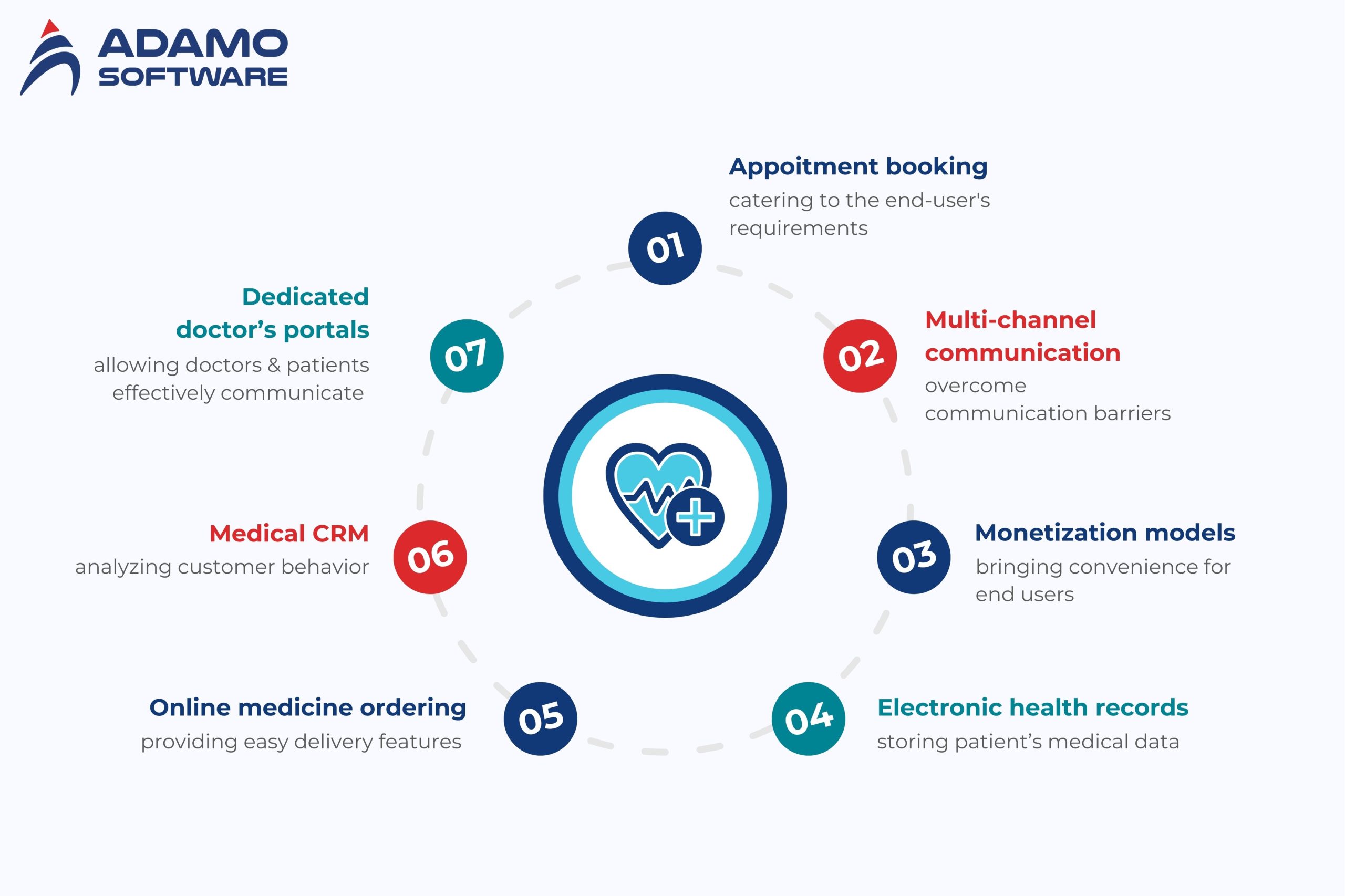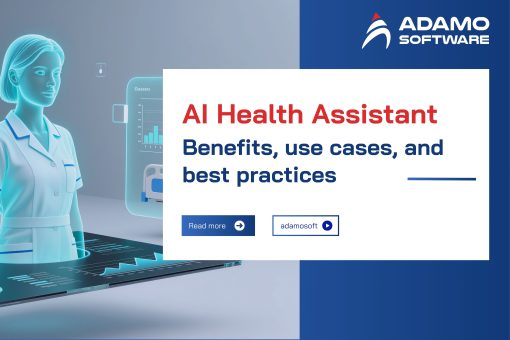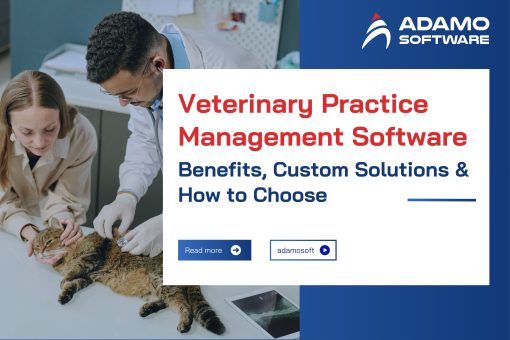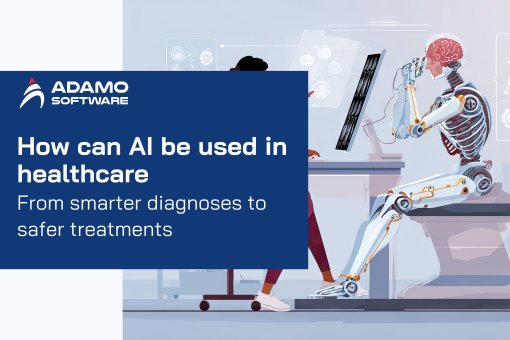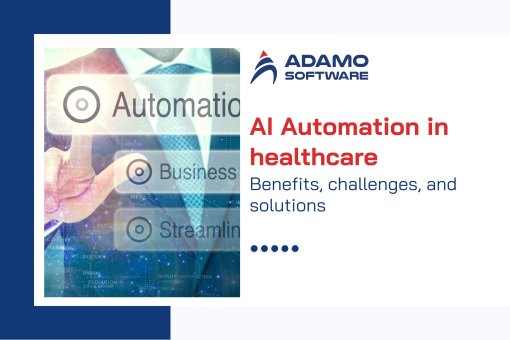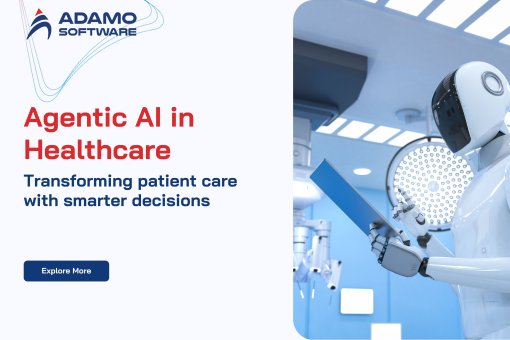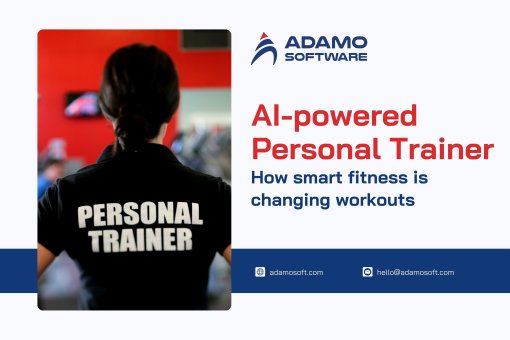Home healthcare app: Benefits, core features & AI integration
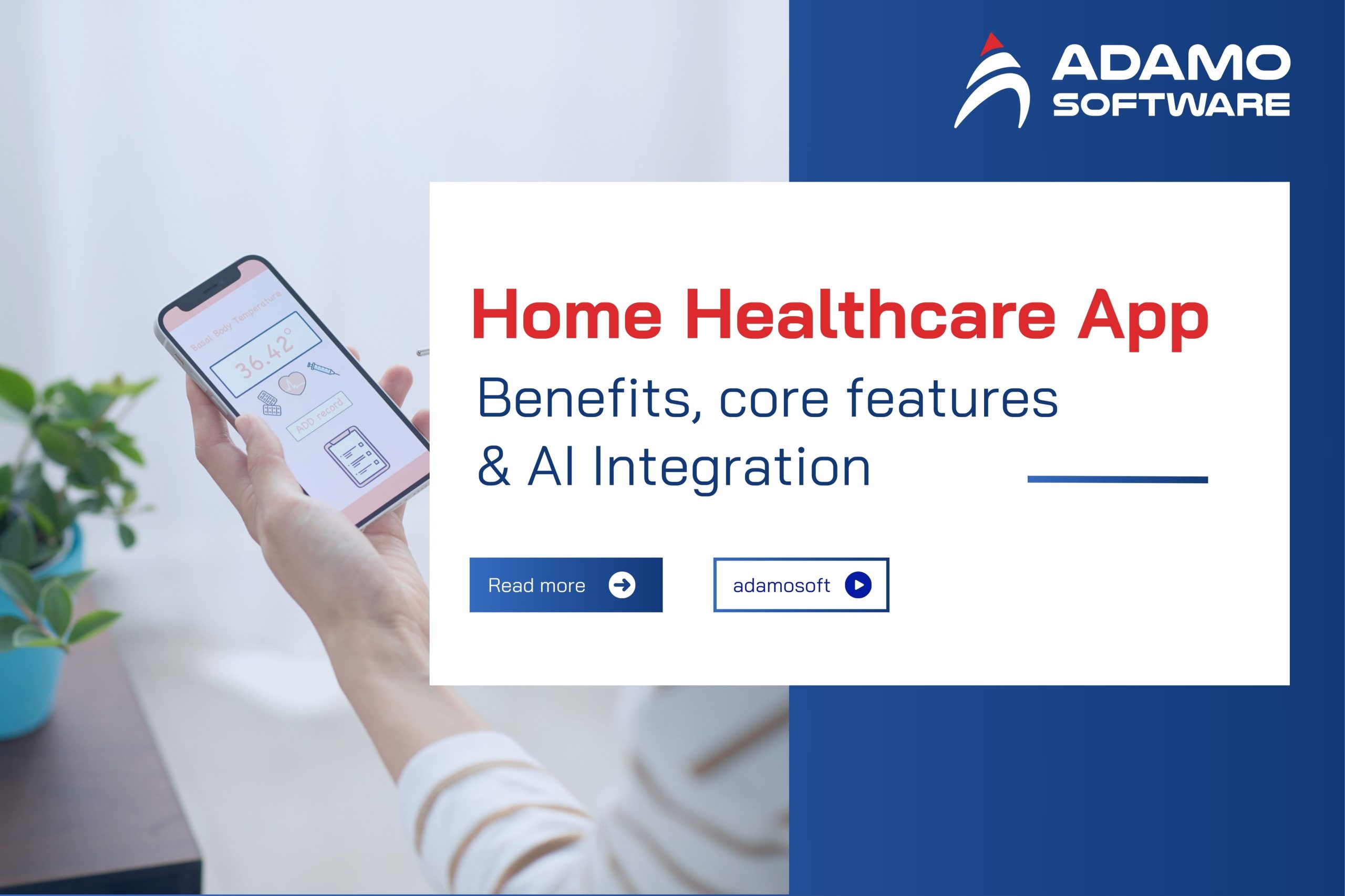
Home healthcare app is becoming more popular thanks to its benefits. Let’s learn about the app with Adamo Software!
Thanks to the development of mobile apps, it is easier for everyone to monitor their health. With a smartphone, patients can check their health comprehensively. The home healthcare app allows healthcare providers to provide healthcare services effectively. Let Adamo Software discuss more detailed information about this app.
Through this blog post, you will find out the following pieces of information.
- What is a Home Healthcare App?
- What are the top benefits of Home Healthcare Software?
- Key features of Home Healthcare App
- Best applications of integrating AI in Home Care Services App
All information has been thoroughly researched and updated to the latest trends. So, let’s read our blog post and find some useful information!
I. What is a Home Healthcare App?
A home healthcare app is a technology solution that helps users monitor and manage their health conditions at home. Through the app, patients can connect with doctors and healthcare professors and receive remote consultation and treatment guidance. This is a useful tool for proactive and personalized healthcare for each user.
The home healthcare app is especially helpful for older people. According to Market.US Media, approximately 86% of home health care patients are age 65 or older. The app enables older patients to be monitored regularly without having to travel to the hospital, minimizing risks and medical costs.
Thanks to the home healthcare app, the quality of treatment and patients’ experiences can be enhanced. The app facilitates the electronic recording of patient data, appointments, clinical notes, and treatment plans by treatment facilities. Increased transparency regarding procedures results in more detailed patient files, which caregivers can easily access digitally. Increased transparency regarding procedures results in more detailed patient files, which caregivers can easily access digitally.
The home healthcare app also often includes integrated features for billing and invoicing, which streamlines financial operations. It can also integrate seamlessly with other health IT systems, such as Electronic Health Records (EHR) and telehealth platforms, promoting comprehensive and coordinated care.
Generally, the development of mobile apps has made it easy to monitor and manage patients’ health. The home healthcare app provides a convenient solution for users to monitor their health status, connect with doctors, and receive quick medical services, anytime, anywhere.
II. What are the top benefits of Home Healthcare Software?
Home healthcare software is beneficial to both patients and healthcare providers. Below are some top advantages of the home healthcare app.
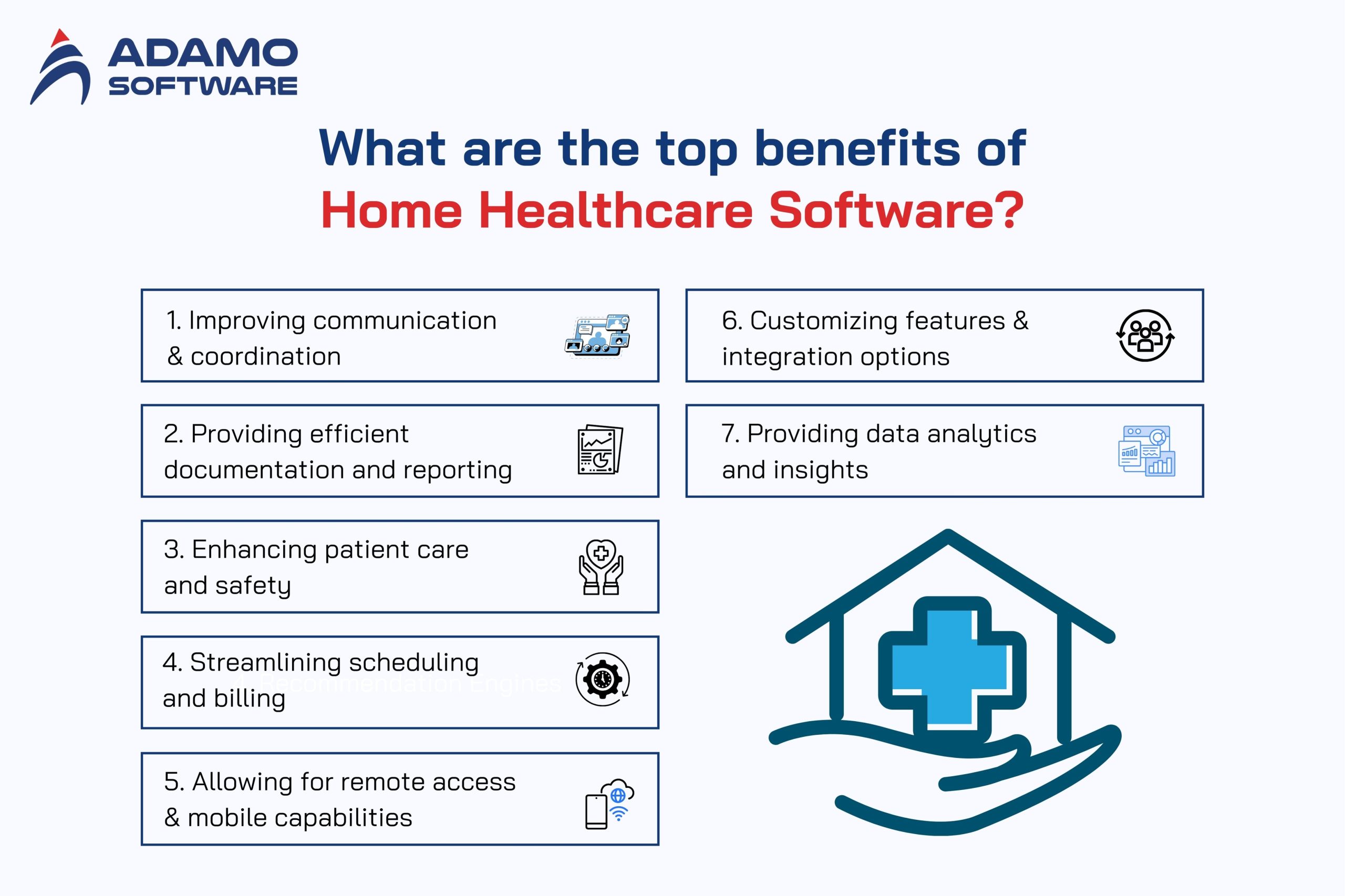
- Improving communication and coordination – Sharing information more easily
- Providing efficient documentation and reporting – Quickly inputting and generating reports
- Enhancing patient care and safety – Real-time access to patient data
- Streamlining scheduling and billing – Reducing administrative tasks and errors
- Allowing for remote access and mobile capabilities – Accessing patient data anytime, anywhere
- Customizing features and integration options – streamlining processes and improving efficiency
- Providing data analytics and insights – identifying trends in patient care
Let’s learn about each benefit with Adamo Software!
1. Improving communication and coordination
The home healthcare app helps to improve communication and coordination between patients and doctors. Thanks to the messaging, video calling, and real-time medical care providing features, doctors can know the patient’s health condition without direct meetings. Patients can also use the home healthcare app to send questions, report symptoms or share test results right on the app. This constant connection helps reduce misunderstandings, supports timely regimen adjustments and improves overall treatment effectiveness.
2. Providing efficient documentation and reporting
The home healthcare app provides efficient documentation and reporting. Thanks to the electronic storage system, all information such as medical records, medical history, prescriptions, and health indicators are automatically updated and synchronized. This helps reduce mistakes made by manual recording and saves time for both patients and medical staff. In addition, reports are generated quickly and accurately, supporting doctors to make better treatment decisions and improve the overall quality of care.
3. Enhancing patient care and safety
With the home healthcare app, patient care and safety can be enhanced. The app helps detect risks early and supports timely intervention through the ability to continuously monitor health indicators and send alerts when there are abnormal signs. Patients also receive reminders to take medication, return check-ups, or follow medical instructions, limiting the possibility of forgetting doses or missing treatment procedures. Providers can use tightly managed and accurately updated data to help patients receive more comprehensive care while minimizing the possibility of medical errors.
4. Streamlining scheduling and billing
The home healthcare app simplifies the entire scheduling and payment process. Users can book appointments, track appointments, and receive reminders with just a few steps on their phones. Thanks to this, they can reduce double-bookings or missed appointments. Additionally, the integrated payment system allows patients to make transactions quickly, transparently, and securely within the app. This automation also allows healthcare facilities to reduce administrative workload and improve overall operational efficiency.
5. Allowing for remote access and mobile capabilities
Remote access and mobile capabilities are one of the outstanding benefits of the home healthcare app. This feature enables patients and doctors to connect with each other, even when they are not in the same location. Users only need a smartphone to view health records, test results, or update indicators in real time. This is especially helpful for patients who live far from medical facilities or have difficulty traveling, making healthcare more continuous and convenient.
In addition, the ability to operate flexibly on mobile devices helps users monitor their health anytime, anywhere. Patients can send information, receive advice, and receive immediate health alerts when there are abnormal signs. Doctors can also access and view patient data remotely to provide timely instructions.
6. Customizing features and integration options
The home healthcare app allows for customization of features based on the needs of individual patients and healthcare facilities. Organizations can configure interfaces, workflows, and functionality based on specific care models or disease groups. This personalization leads to a more tailored patient experience and improved treatment outcomes. This makes the application more flexible when deployed in a variety of care settings.
In addition, the home care management software also supports integration with many other healthcare systems such as EHR, EMR, smart wearables, or telehealth platforms. This connection helps synchronize data, limit information duplication, and increase accuracy in the health monitoring process. Medical staff can easily access comprehensive patient information to make better treatment decisions. Thanks to that, the healthcare ecosystem has become more seamless and optimized.
7. Providing data analytics and insights
Thanks to the home healthcare app, healthcare providers can understand the condition and needs of patients better, with the provision of powerful data analytics. By collecting data in real time, the system can identify health trends, abnormalities, or small changes in indicators. This helps doctors make more accurate and timely treatment decisions. At the same time, patients also receive useful information to proactively monitor their health.
Additionally, reports and analytics from the home healthcare app help optimize care processes and improve operational efficiency. Healthcare facilities can predict service needs, better manage resources, and improve care quality based on real-world data.
III. Key features of Home Healthcare App
If you are going to launch your home healthcare app, you may want to know the key features of the software. Below are some outstanding features to note.
- Appointment booking – catering to the end-user’s requirements
- Multi-channel communication – overcome communication barriers
- Monetization models – bringing convenience for end users
- Electronic Health Records – storing patient’s medical data
- Online medicine ordering – providing easy delivery features
- Medical CRM – analyzing customer behavior
- Dedicated doctor’s portals – allowing doctors and patients effectively communicate
Let’s find detailed information about each feature with Adamo Software!
1. Appointment booking
The home healthcare app’s appointment booking feature is designed to optimize end-users’ benefits. Patients can easily choose the doctor, suitable time and type of service needed with just a few simple steps. The system also provides calendar reminders, helping patients not to miss any important appointments. Thanks to this convenience, the user’s healthcare experience becomes more seamless and proactive.
In addition, the app allows for customizing the appointment process based on the characteristics of each medical facility or patient group. Medical facilities can set up appointment times, service descriptions, pre-examination preparation requirements, or prioritize each user group. This ensures that every appointment is handled efficiently and in accordance with service delivery capabilities. As a result, the appointment feature becomes an important tool to optimize operations and increase patient satisfaction.
2. Multi-channel communication
Thanks to the multi-channel communication feature, the home healthcare app can overcome barriers in information exchange between patients and medical staff. Users can choose from many forms of communication such as texting, voice calling, video calling, or sending medical documents online. This is especially useful when patients have language limitations, geographical distance, or cannot come directly to the medical facility. Thanks to that, the communication process has become more flexible, faster, and more effective.
Besides, multi-channel communication helps ensure that all important information is conveyed clearly and promptly. Medical professionals can respond quickly, provide treatment instructions, or answer patient questions right in the app. Saving communication history also helps reduce misunderstandings and helps doctors track treatment progress more accurately. This feature plays an important role in improving the quality of care and building trust between patients and medical teams.
3. Monetization models
Monetization models in home healthcare apps provide ultimate convenience to end users. Through flexible payment options such as fee-for-service, monthly subscriptions, or per-consultation, users can choose the method that suits their needs and budget. This makes it easy for patients to access quality healthcare services without financial barriers. At the same time, fast and transparent online payments create a seamless and reliable experience.
4. Electronic Health Records (EHR)
The EHR feature enables the home healthcare app to store all patient medical data securely and systematically. Information such as medical history, test results, prescriptions, and health indicators are continuously updated and synchronized on a digital platform. This helps patients and doctors easily access data when needed, without having to rely on traditional paper records. As a result, the monitoring and treatment process becomes faster and more accurate.
4. Online medicine ordering
The online medication ordering feature helps the home healthcare app provide a convenient and quick experience for users. Patients can view prescriptions, select pharmacies, and place orders right in the application without having to go to the store directly. The system also allows tracking order status, from confirmation to delivery, giving users more peace of mind. Thanks to that, the process of purchasing medicine becomes simpler, saves time, and reduces unnecessary inconveniences.
5. Medical CRM
When you integrate the medical CRM into your home healthcare app, you can analyze patient behavior and needs accurately. The system collects data from interaction history, service usage frequency, feedback, and health records to build a comprehensive user profile. As a result, medical facilities can clearly understand the habits, expectations, and concerns of each patient group. This helps improve service quality and increase user satisfaction.
Moreover, medical CRM also helps to make personalized recommendations based on analytical data. Patients can receive suitable service suggestions, reminders for regular check-ups, or special care programs based on their individual needs. For medical facilities, CRM helps to optimize outreach strategies, increase customer retention rates, and manage patient relationships more effectively.
6. Dedicated doctor’s portals
The home healthcare app’s portals for doctors help to enhance communication between the medical team and patients. Through this portal, doctors can quickly access medical records, test results, and treatment history to fully grasp the patient’s health status. Patients can also submit questions, update symptoms, or request consultations, and receive timely feedback from doctors. As a result, the exchange process becomes clearer, faster, and more accurate.
IV. Best applications of integrating AI in Home Care Services App
With the rapid development of artificial intelligence, home healthcare applications are becoming smarter and more efficient than ever. Let’s explore the best application of AI in home healthcare services app with Adamo Software!
1. Automating workflows and documentation
Automating workflows and documentation is one of the most outstanding applications of the home healthcare app. This helps automate workflows and document processing efficiently. The system can automatically capture data, fill out forms, classify records, and generate reports without requiring manual intervention from healthcare staff. This reduces errors, saves time, and optimizes administrative workload. Thanks to automation, doctors and nurses can focus more on patient care instead of handling paperwork.
2. Customized care and proactive interventions
The integration of AI enables home healthcare apps to provide personalized care plans based on each patient’s individual needs. Based on health data, treatment history, and medical behavior, the system can make appropriate recommendations, from medication schedules to nutrition or rehabilitation exercises. AI also supports early detection of abnormalities through real-time analysis and timely alerts. As a result, proactive interventions are made earlier, helping to reduce the risk of complications and improve overall care efficiency.
3. Smarter, connected systems
The integration of AI enables home healthcare apps to become smart and interconnected systems. Various medical devices and platforms can seamlessly exchange data, from electronic records to personal health monitors. This allows doctors to grasp patient conditions in real time and make more accurate treatment decisions. At the same time, patients also experience more continuous, convenient, and comprehensive care.
V. Final thoughts
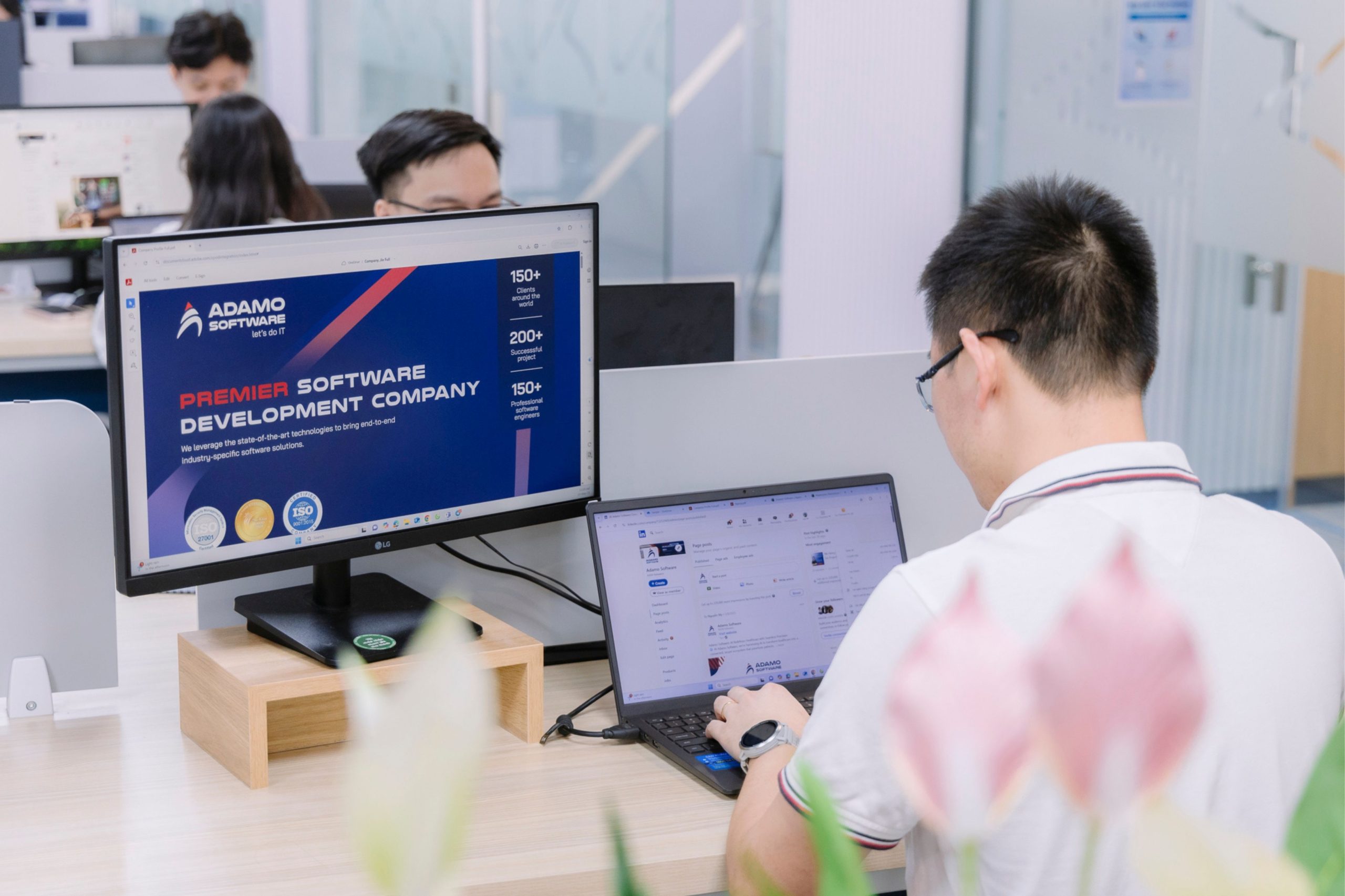
In conclusion, the home healthcare app is getting more popular. It is a useful tool for enhancing healthcare services and patient experiences. With features like remote health monitoring, appointment scheduling, multi-channel communication, and AI integration, users can receive convenient, safe, and personalized medical services right at home. At the same time, medical facilities are also supported to optimize workflows, manage data, and improve care efficiency.
You may want to choose a professional partner to help you build your own home healthcare app. As one of Vietnam’s leading technology companies, Adamo Software can be your ideal choice. Here’s how Adamo can help.
- Develop a custom healthcare website with a user-friendly and easy-to-use interface.
- Integrate online appointment scheduling, medication reminders, and health record tracking.
- Support remote consultation, connect patients with doctors or medical professionals.
- Manage medical data safely, securely, and connect with health monitoring devices.
- Optimize operational efficiency for medical facilities and enhance the healthcare experience for patients.
Still hesitating whether to choose Adamo Software? Let’s contact us for more detailed information!
FAQs
1. What are the best practices for integrating a CRM with a home care website?
To help your home-care business efficiently capture leads, optimize client support, and deliver truly personalized service, focus on six crucial integration practices.
| Practice | Why it matters |
| Define clear objectives & workflows | Clarifies exactly how website visitors become leads, how client data flows, and how the CRM supports care operations. |
| Choose a CRM with strong integration capabilities | Ensures the CRM supports your website platform, APIs and home-care workflows so you avoid mis-fits. |
| Automate lead capture and client segmentation | Website forms, booking requests and contact-us entries should flow into the CRM and trigger actions (e.g., intake, assignment) |
| Maintain data cleanliness & governance | Ensures accurate client profiles (especially sensitive care data), prevents duplicates and supports compliance. |
| Secure and comply with privacy regulations | Home-care websites handle personal health and support data—make sure encryption, access control, and audit trails are in place. |
| Monitor, optimise and train your team | Integrations evolve—track performance metrics, train staff on the new flows and fine-tune over time. |
2. Can home care management software help reduce costs?
Yes, the home healthcare app can help reduce costs. Implementation of home healthcare software can lead to tangible financial benefits and expenditure optimization for both care recipients and agencies. By minimizing unnecessary in-person visits and decreasing hospital readmissions, the software effectively lowers overall healthcare costs without compromising the quality of care provided.
3. What are suitable tech stacks for Home Health Diagnostics Integration with primary care?
Choose a stack that balances device connectivity, clinical interoperability (FHIR/HL7), security, and real-time data flow. Here are three proven patterns:
| Use case | Core services | Interop & data | Connectivity | Security & governance |
| Rapid MVP / Clinic pilot | React/Next.js (portal), React Native/Flutter (patient), Node.js or Python (FastAPI) | FHIR R4 (Patient/Observation/Device), LOINC/SNOMED mapping, lightweight ETL (dbt/Airflow) | BLE/Wi-Fi devices → MQTT (Eclipse Mosquitto) → Timeseries DB (TimescaleDB) | OAuth2/OIDC (Keycloak), TLS 1.2+, PHI encryption at rest (Postgres + KMS), audit logs |
| Enterprise EHR integration | Java/Spring Boot or .NET for APIs, API gateway (Kong/Apigee), Mirth Connect for HL7 | HL7 v2 (ORU/ADT) + FHIR R4, SMART-on-FHIR app launch, code systems (LOINC/SNOMED RxNorm) | Device vendor clouds → Kafka/RabbitMQ → Canonical FHIR store | SSO (OIDC/SAML), fine-grained consent, mTLS to EHR, SIEM (ELK/Splunk) |
| Real-time remote monitoring (RPM) | Event streaming (Kafka), stream processing (Flink/Spark), serverless (AWS Lambda/Azure Functions) | FHIR Subscriptions for alerts, rules engine (OpenHRE/Custom) | Edge gateway (Docker/Yocto), IEEE 11073/BT GATT → MQTT/AMQP | Device attestation, HSM/KMS key mgmt, policy-as-code (OPA), anomaly/fraud detection |
Cloud picks (HIPAA/GDPR-ready):
- AWS: API Gateway, FhirWorks/HealthLake, IoT Core, RDS (Postgres), KMS, Cognito.
- Azure: API Management, Azure Health Data Services (FHIR), IoT Hub, Cosmos DB, Key Vault, Entra ID.
- GCP: Apigee, Cloud Healthcare API (FHIR/HL7/DICOM), IoT Core alt (MQTT on Pub/Sub), Cloud SQL, KMS.
Testing & compliance: contract tests (PACT), synthetic data (Synthea), threat modeling (STRIDE), e2e audit trails, clinician-in-the-loop validation.
Tip: If your team lacks in-house interoperability expertise, partner with an outsourcing development service to implement SMART-on-FHIR, map diagnostics to LOINC/SNOMED, and harden security/consent flows.




